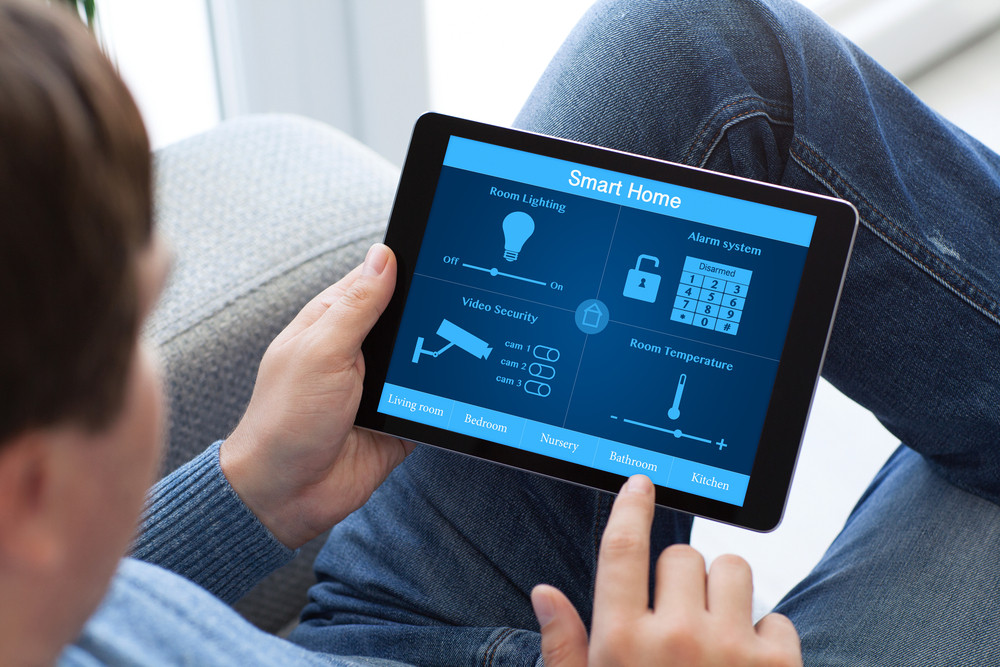Share This
Related Posts
Tags
Ecoluxury
By Erica Rascón on Jul 18, 2017 in News
Modern renters gravitate towards housing that allows them to protect natural resources without sacrificing convenience. Increasing demand has paved the way for sustainable features to shift from ecoluxury to affordable communities.
without sacrificing convenience. Increasing demand has paved the way for sustainable features to shift from ecoluxury to affordable communities.
Luxury is not a term for opulence. Rather, the phrase reflects the Latin luxus, which denotes something that is precious and of optimal caliber. The ecoluxury lifestyle and products signify the value of our environment and the high quality of the products used to protect it.
Joyce Mihalik, Vice President, Integrative Design, Forest City Realty Trust, defines ecoluxury as “seamless elegance embedded with sustainable design that gives the tenant a luxurious experience.” Sustainable features must blend with convenience, functionality, and style.
Ecoluxury appeals across demographic boundaries. “If you can afford it, you will want it,” Mihalik casually says.
The trending products below reappear in ecoluxury communities throughout the United States. As demand rises and pricing becomes more competitive, these features will appear more frequently in market rate and affordable communities.
Home Automation Devices
GID Investment Advisers, and its property management company Windsor Communities, is a national leader in green multifamily properties. With 11 green certified buildings and nine additional properties in the certification process, the Boston-based company takes pride in its ecoluxury residences.
Matthew Bernstein, Asset Manager, GID Investment Advisers, notes the growing popularity of smart home devices, “Home automation will continue to grow, offering new opportunities for residents to enjoy smart homes.”
Home automation devices allow renters to remotely control thermostats, fixtures, appliances, and even outlets through the use of a mobile device.
GID’s Los Angeles property, Hanover Olympic, offers 20 Eco-green units. Each unit is equipped with a Google Nest Thermostat. After one week of use, Nest learns the preferences of inhabitants. The device then automatically adjusts interior temperatures to account for factors such as occupancy, season, and time of day.
To override automated settings, residents manually control the device via the Nest mobile app. The app also offers reports on energy used and costs saved.
LED lighting presents an additional application for home automation at the property.
“We’ve installed occupancy sensors for lighting,” says Bernstein. “The lighting, often LEDs, activates when sensors detect movement in the room. After several moments without movement, the lights turn off automatically.”
Such automation keeps energy costs low and adds an additional feature that appeals to modern renters—practical tech gadgets.
The modern home isn’t complete without an array of gadgets. Unfortunately, smart televisions, gaming consoles, computers, modems, and other devices draw idle current when not in use. This phantom load contributes to higher energy costs and unnecessary strain on the energy grid.
To help with power management, master switches such as the GreenSwitch™ cut all standby power from devices, reducing “vampire power.” Residents decrease energy costs and conserve resources by managing inactive devices that would normally siphon energy.
Home automation is no longer a feature reserved for elite residences. It is successfully transitioning into a popular amenity for earth conscious and tech savvy renters. A survey, Americans Ready for the Smart Home, issued by Coldwell Banker Real Estate LLC and CNET, found that 47% of people ages 18 to 34 own connected home technology.
Transportation
According to “What Renters Want” in The Atlantic, nearly half of Millennial car owners say they would be willing to give up their car if they had alternative modes of transportation, such as public transit, ride shares or walkability. Public transportation can eliminate the cost of a vehicle and insurance for renters, while also shortening commute times and reducing carbon emissions.
For Bernstein, eco-friendly transportation extends beyond public transit. “Residents care about walkability. Electric vehicle changing and bike storage are also on the top of the list.”
GID’s The Sovereign property in Houston offers multiple transportation options for residents. The property stands adjacent to Regent Square, a mixed-use site showcasing shops and restaurants within walking distance. The Sovereign also offers guests a storage room for up to 109 bikes, complete with a repair station. For those with farther distances to travel, the site accommodates METRO public transportation.
For residents who opt to own a vehicle, The Sovereign is equipped with two electric charging stations. Residents can charge their vehicles in as little as 30 minutes, depending on the size of the battery in conjunction with the speed of the charging station.
Hybrid and electronic car options have a growing fan base among young adults. A survey issued by the Consumer Federation of America depicts rising interest in electronic vehicles: the percentage of people who would consider buying an electric car increased from 31 percent to 36 percent. Among young adults ages 18 to 34, the level of interest came in at 50 percent.
Electric cars are becoming more mainstream. Tesla, for example, released its Model 3 series starting at $35,000. As vehicle pricing becomes more favorable, the demand for charging stations will increase at properties of varying price points. What was once a feature of ecoluxury will become increasingly commonplace.
From Ecoluxury to Mainstream
Nearly 20 years ago, alternative energies and home automation were seen as features of high-end, new construction. Times have changed. The increasing number of green market rate and affordable properties is thoroughly documented.
Affordable housing is adapting solar power en mass. The Renew300 program, initiated by the U.S. Department of Housing and Urban Development, jumpstarted the installation of solar panels in millions of properties nationwide.
Several authorities, such as the state of California and the District of Columbia, have independent programs to promote solar power generation in affordable housing.
As demand continues to grow, sustainable features are arguably impervious to political change.
“The sustainable message is being heard across the real estate industry right now. I don’t think we’re ever going to go back,” reflects Mihalik. “It’s true that sustainability and efficiency have been adopted. It’s not likely to be repealed by the consumer.”
Mihalik forecasts that sustainable living will become more mainstream quietly and naturally, “It will happen organically through the typical repair and replace cycle that all buildings go through. Inevitably, what we buy now is going to be more sustainable than what we were buying 20 to 30 years ago. How quickly can we get there is more of the question than whether or not we will.”
Timing depends largely on advances in retrofits, Mihalik says. What and when to retrofit in order to maintain competitive market rates remains a challenge for significantly older properties.
It is a challenge worth overcoming. Consumers are interested in eco-conscious retrofits.
Rebecca Crunk is a young professional, Gen X, living in Philadelphia. She has been a renter in market rate communities for more than 13 years. With each relocation, she aims for a community that is greener than the last.
Crunk explains, “I wanted a more up-to-date structure. It didn’t have to be new construction but something that would offer energy efficient appliances and something to make me feel that the building was looking to make as little of a footprint as possible,” she says. “The majority of the people that I hang around are like-minded.”
Forecast – Items on the Horizon
Sensors will take the future of ecoluxury a step farther.
“We think in the future, eco amenities will be tied into the internet of things and many will be anchored by sensors,” says Shawn Mahoney, CIO of GID. “Sensor information will be accessed by the management company and resident, and used for the basis for automated responses or traditional decision making. I see a lot of potential in that.”
Mahoney cites progress in lighting in the forefront of the trend. Lighting is linked to the circadian rhythm of most living creatures. When LEDs are connected to sensors, users can control the color and intensity of the lights to mimic certain conditions or promote a mood or atmosphere.
“You will see a lot of that in commercial spaces,” observes Mahoney. “We haven’t seen how that would work in residential but we’re keeping on top of that.”
Intelligent personal assistants (IPA), such as Alexa, Siri, and Cortana are also growing in popularity. The market for IPAs is expected to exceed $11 billion USD by 2024, according to a report by Global Market Insights, Inc.
IPAs will be integrated in more devices throughout the smart home. Now most popular in mobile devices and smart speakers, IPAs of the future will integrate with home automation.
Technology pioneer Mark Zuckerberg has developed a real-life Jarvis that is voice activated and home automation equipped. The technology is not yet ready for consumption but developments seem promising.
